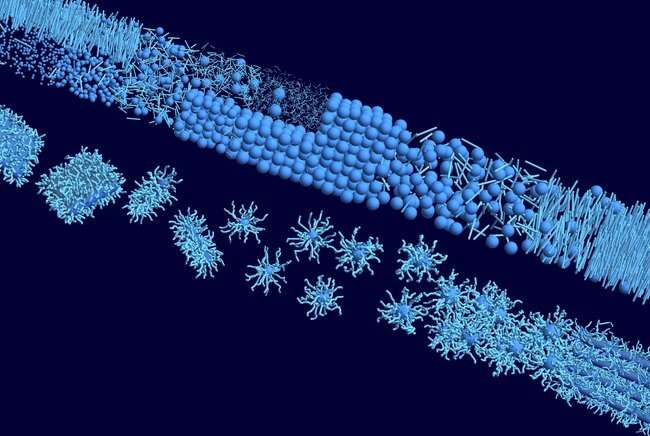Credit: Joeri Opdam
Soft matter is an important class of materials that typically consists of colloidal particles and/or polymers in a liquid medium. For certain compositions, these types of systems tend to (micro-)phase separate and unmix into coexisting phases that differ in composition, structure, and properties. Ph.D.-researcher Joeri Opdam developed theoretical methods to accurately predict the phase behavior of soft matter systems that consist of colloidal mixtures and block copolymers, which is crucial for their applications in products as coatings, pharmaceuticals and food.
Colloidal particles and polymers are important building blocks for the fabrication of novel materials. Furthermore, they are ubiquitously present in so-called "soft matter" which refers to industrial products such as paint, mayonnaise and tooth paste but also natural systems like clay, blood and living cells. Such systems display phase behavior similar to atoms and molecules where, depending on the concentration of colloidal and/or polymeric components, different phases such as a fluid or a (liquid) crystal are assumed. In a colloidal dispersion that contains particles with different sizes and/or shapes or in solutions of block copolymers, the interactions between the different components can induce phase separation. Then, the system is no longer homogeneous but demixes into coexisting phases with different compositions. For many applications it is desired to prevent phase separation, but in certain cases it can be a desired effect to separate components using phase transitions or induce stratification.
In his Ph.D. research, Opdam improved theoretical concepts originally developed to study phase behavior of colloid/polymer mixtures, but which can now be applied to colloidal mixtures. With this theoretical model he mapped the stability regions of different types of (coexisting) phases for colloidal mixtures for a wide range of size ratios, shape parameters, and concentrations. The model predictions are in close agreement with experiments and computer simulations performed by collaborators. Furthermore, the theory revealed a variety of interesting phenomena such as the possibility of separating into five different coexisting phases in a simple dispersion containing only two types of hard particles.
Lattice model
Block copolymers can spontaneously order into macroscopic phases with periodic domains in the nanometer scale. Using a lattice model based on self-consistent field theory Opdam showed how solvents can be used to manipulate the size and shape of these domains which can be used to fabricate block copolymer materials with specific optical or electronic properties. Furthermore, he showed how the surface affinity of block copolymer surface modifiers in coating formulations relevant for the automotive industry is affected by drying. The results supported experimental findings, which revealed that the distribution of block copolymers over the bulk and the surface can significantly deviate between the wet coating formulation and the cured coating.
Theoretical models offer a fast method to estimate how certain parameters affect phase transitions and can therefore be used to guide experimental and computational work. This research is therefore an important step towards the understanding and efficient use of colloidal mixtures and block copolymers which helps the design of soft matter systems with desired properties.
More information: Joeri Opdam, Phase transitions of hard colloidal mixtures and soft block copolymers. research.tue.nl/en/publication … and-soft-block-copol
Provided by Eindhoven University of Technology
























